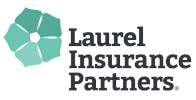 NEVER THOUGHT I’D SAY IT!
NEVER THOUGHT I’D SAY IT!
Life Insurance Companies are beginning to turn business away.
COVID-19 and the resulting crash in interest rate are causing Life Insurers to rethink their projections. Life Insurers pool premiums which increases capital reserves and hence helps mitigate risk. That is the long and short of it but companies make much of their profits buying bonds until claims come due (notice figure below). When determining premiums, obviously, the higher the interest rate, the lower the premium. This can have an effect on term policies and permanent policies. In fact, many insurers are already halting sales of their 30 year term products due to collapse in interest rates (Source Wall Street Journal. May 10,2020)

But lets break that down when looking at permanent insurance:
3 Main Types of Fixed- Permanent Life Insurance
-
Traditional Whole Life–
- When we think of permanent Life Insurance, we think whole life. To keep it simple, whole life focuses on guaranteed death benefit and guaranteed cash value by way of dividends. Often very costly in comparison to other permanent options.
-
Universal Life-
- Traditional Universal Life. The cash value is directly tied to the bond market. Premium calculations are determined based on interest rates at time of application. In years where interest rates are higher than they were at the time of signing application, more cash is credited to your “cash account”. Therefore, when interest rates are lower than initially projected, cash value is lower and often times company may require additional premiums to keep policy inforce
- Universal Life with secondary guarantees- Premiums are fixed, death benefit is guaranteed, cash value is used to fund secondary guarantees thereby fixing the premium and death benefit
-
Indexed Universal Life–
- Cash Value is tied to S&P 500. Participates in the market upticks, protecting cash value from market loss. Cash Account is not “in the market”, rather the company is investing in futures in order to provide cash value protection from down markets.
- You can purchase with guaranteed death benefit option or not. If you do not have secondary guarantee on death benefit, there is more room for cash value accumulation because typically cost of insurance charges are less per thousand dollars.
My Opinion:
First of all, I haven’t thought of Traditional Whole Life as a fitting option for clients in years- really ever! Premiums are far too high relative to the latter two options. Traditional Whole life is certainly going to be impacted by the drop in interest rates.
Universal Life. Since premiums are calculated based on current interest rates, premiums are going to go up. Here is the caveat or silver lining: If your premiums are calculated higher because of low interest rates, your premium is higher than it would have been if purchased even 6 months ago. However when interest rates rise, and they will, more money is going into your cash account hence literally “overfunding” your policy. You can then adjust premium to minimum to keep policy afloat or continue to overfund and use for tax free income later or just increase the death benefit
Indexed Universal Life. I saved the best for last. Here is why I think this is good option in these times. Indexed Universal Life policies credit accounts based on the returns of the S&P 500 from each policy anniversary dates.
There can be several different index allocation options. For example, one option is One-Year Upcapped option (meaning the credited interest is not capped at a set amount). The participation rate is 45% (meaning only 45% of you money is calculated using S&P 500)
Example, you purchase a policy on May 13, 2020 and the S&P 500 closes at $2,870.12. Obviously, markets are taking a beating because of COVID. Inevitably , we will rebound so you are getting into a policy when the S&P is down- Always buy low!
Assumptions: At the policy’s anniversary date of May 12, 2021, the S&P 500 now sits at 3,300. That is a year Point-to-Point rate of return of 15% (($3,300-$2,870.12)/$2,870.12). So with a participation rate of 45%, 6.75% (15%X45%)would have been credited to your cash value at the anniversary date.
So despite flatlining of interest rates , indexed universal life policies still have a great amount of room for growth, guarantees, a tax free income.
If you have questions or would like additional information, call us anytime at (828)513-5045
Regards,
Beau Singletary, ChFC, CLU

